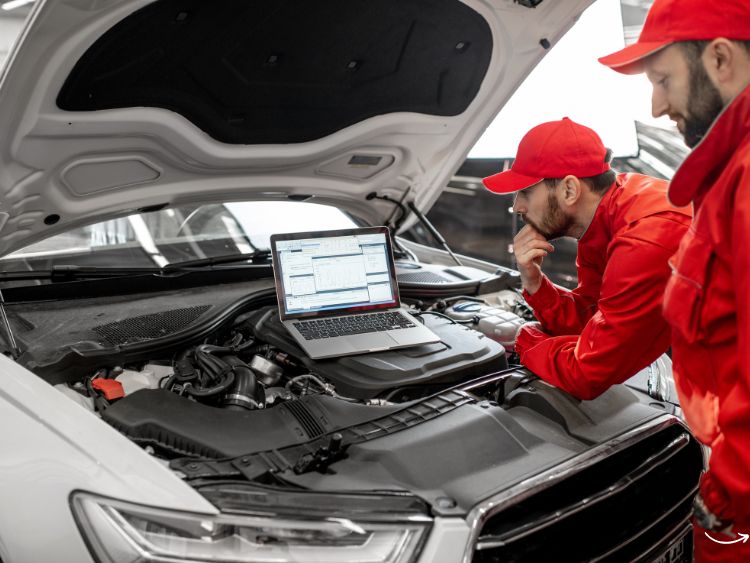Have you ever wondered how the United States Postal Service (USPS) keeps its massive fleet of vehicles running smoothly day in and day out? It’s no small feat! With over 230,000 vehicles in their arsenal, USPS relies on a network of vehicle maintenance facilities (VMFs) to ensure timely and efficient mail delivery across the nation. Let’s dive into the fascinating world of USPS vehicle maintenance facilities and see what keeps these essential operations humming.
What is a USPS Vehicle Maintenance Facility?
A USPS vehicle maintenance facility (VMF) is a specialized service center responsible for the upkeep, repair, and management of the USPS vehicle fleet. These facilities are scattered across the country, each playing a crucial role in maintaining the operational efficiency of mail delivery vehicles. From routine maintenance to major overhauls, these facilities handle it all, ensuring that the USPS fleet is always in top condition.
The Importance of USPS VMFs
Without USPS VMFs, the reliability of mail delivery would be at significant risk. Here’s why these facilities are so vital:
- Fleet Maintenance: Regular maintenance and inspections ensure vehicles are safe and functional.
- Efficiency: Prompt repairs minimize downtime, ensuring mail deliveries are not delayed.
- Cost-Effectiveness: Preventive maintenance reduces the need for costly emergency repairs.
- Longevity: Proper care extends the lifespan of vehicles, making the fleet more sustainable.
Inside a USPS Vehicle Maintenance Facility
So, what happens inside a USPS VMF? Let’s take a closer look at the typical operations:
Routine Maintenance
Regular checks and services are essential to keep vehicles in peak condition. This includes:
- Oil Changes: Keeping engines running smoothly.
- Tire Inspections: Ensuring tires are properly inflated and free of damage.
- Brake Checks: Guaranteeing the safety of the vehicle and its driver.
- Fluid Levels: Monitoring and topping off essential fluids like coolant and transmission fluid.
Repairs and Overhauls
When a vehicle breaks down or needs significant repairs, the VMF steps in to diagnose and fix the issue. This can range from engine repairs to transmission overhauls, ensuring each vehicle is back on the road as soon as possible.
Parts Management
VMFs must maintain a well-organized inventory of parts to ensure quick and efficient repairs. This includes everything from small components like spark plugs to larger items like transmission units.
Technological Integration
Modern USPS VMFs are increasingly integrating technology to streamline operations. Diagnostic tools, maintenance software, and computerized inventory systems help technicians work more efficiently and accurately.
Challenges Faced by USPS Vehicle Maintenance Facilities
Running a USPS VMF is no walk in the park. Here are some common challenges:
- Aging Fleet: Many USPS vehicles are old, requiring frequent and extensive maintenance.
- Budget Constraints: Limited funding can hamper the ability to purchase new vehicles or state-of-the-art equipment.
- Technological Upgrades: Keeping up with advancements in vehicle technology can be challenging and costly.
- Skilled Workforce: Recruiting and retaining skilled technicians is essential but often difficult.
The Future of USPS VMFs
The future looks promising for USPS vehicle maintenance facilities, thanks to several innovative strategies and advancements:
Electrification of the Fleet
USPS is gradually transitioning to electric vehicles (EVs) to reduce carbon emissions and fuel costs. This shift necessitates the adaptation of VMFs to handle the unique maintenance needs of EVs, including battery management and specialized diagnostic tools.
Advanced Diagnostic Tools
The integration of advanced diagnostic tools and software allows for more precise and efficient vehicle maintenance, reducing downtime and increasing the lifespan of the fleet.
Training and Development
Investing in the continuous training and development of technicians ensures they are up-to-date with the latest technologies and repair techniques, enhancing overall operational efficiency.
FAQs About USPS Vehicle Maintenance Facilities
How many USPS vehicle maintenance facilities are there?
As of the latest data, there are over 300 USPS VMFs located throughout the United States, strategically placed to cover the vast network of delivery routes.
What types of vehicles do USPS VMFs service?
USPS VMFs service a wide range of vehicles, including delivery trucks, vans, and administrative vehicles, ensuring the entire fleet is maintained to high standards.
How often do USPS vehicles undergo maintenance?
USPS vehicles undergo routine maintenance at regular intervals, typically every 5,000 to 7,500 miles, depending on the vehicle type and usage.
What is the role of technology in USPS VMFs?
Technology plays a crucial role in USPS VMFs, from diagnostic tools to inventory management systems, enhancing the efficiency and accuracy of maintenance operations.
Are USPS VMFs open to the public?
No, USPS VMFs are not open to the public. They are dedicated facilities for the maintenance and repair of USPS vehicles only.
Summary
USPS vehicle maintenance facilities are the unsung heroes behind the scenes, ensuring the nation’s mail delivery system runs like clockwork. From routine maintenance to major repairs, these facilities handle it all with precision and efficiency. As USPS continues to evolve and modernize its fleet, the role of VMFs will only become more critical. With a focus on sustainability, technological integration, and skilled workforce development, the future of USPS VMFs looks bright and promising.
Authoritative Links
For more information on USPS vehicle maintenance and related topics, check out these authoritative sources:
- USPS Maintenance Management
- USPS Fleet Information
- USPS Sustainability Efforts
By maintaining a robust and efficient network of vehicle maintenance facilities, USPS ensures that every letter and package reaches its destination on time, every time. Whether it’s an oil change or a major engine repair, the dedicated teams at these facilities keep the wheels of the USPS turning smoothly. So next time you see a USPS vehicle on the road, you’ll know there’s a lot more behind that blue and white truck than meets the eye.

